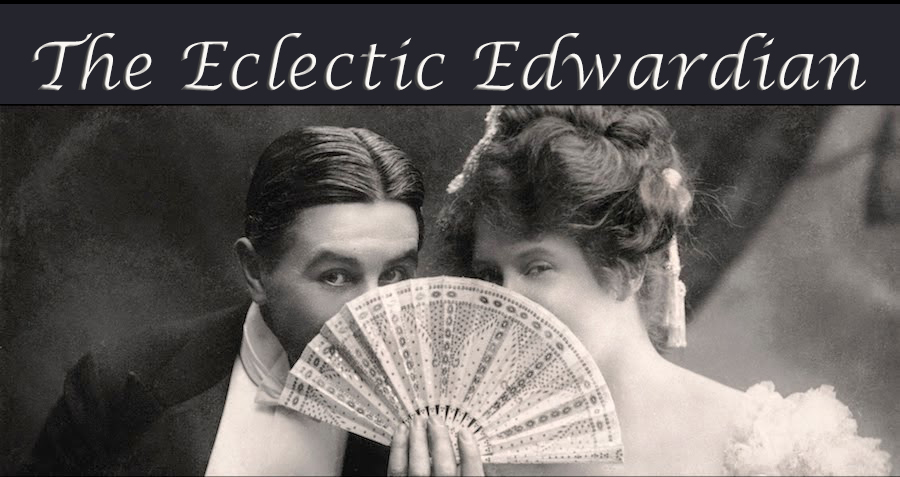I had to do a lot of research about the world of early film when I was writing my latest novel, The Last Days of Leda Grey. Most of that research was then left in a heap on the 'cutting room floor' when developed into fiction. But, here is a new blog post that is based on the factual work of 'Daddy Paul' ~ one of the founding fathers of the world of moving film. An amazing inventor and businessman...
R W Paul was an inventor of intricate electrical instruments, such as the unipivot galvanometer, and wireless telegraphy sets which were often used in submarines during the years of World War 1. From 1918 when his business merged with the Cambridge Instrument Company he helped to invent the iron lung.
But his pioneering expertise in the era of early silent film led to great innovations there as well ~ even being able to put one over Thomas Edison when discovering that the American had not patented his new kinetoscope (the forerunner of the motion film projector, where films were observed through a large box, inside of which reels of films were hung).
Having dismantled Edison’s machine, Paul then constructed one of his own, although when it came to showing films only bootlegs could be used, with Edison being canny enough to patent the cameras that made the films.
So, along with a man called Birt Acres, a photographic expert, Paul designed a camera of his own. Also, by then having had success at the Earls Court Exhibition, they considered projecting the films they made onto much larger theatre screens ~ something else Edison hadn’t thought about.
At this point the Birt partnership ended. The two men became competitors, both demonstrating their machines in the early months of 1896 ~ with Paul’s new show coinciding exactly to the day with that of the Lumiere brothers first appearing in London with their shows.
What an exciting time it was for the future of the film industry! In very little at time at all the Lumieres were on permanent hire at the London Empire Music Hall, while Paul was employed in Leicester Square by the Alhambra theatre.
One of R W Paul's theatrographs
A later version, known as the Animatrograph
With these ‘Theatrograph’ shows then becoming successful all over the country, Paul extended the rest of his empire to create a larger business. He produced cameras and projectors, and everything that might be used to set up a cinema of one’s own. In short he had the foresight to see where the industry might lead, and the business sense to take control of every aspect of manufacture, rather than being one small cog if what would be the most enormous wheel.
Still working on innovations he created hand-held cameras to be used anywhere a director wished, thus extending the scope for film-making to include more natural scenery. The introduction of reverse cranking meant that the film run through the cameras could be moved backwards as well as ahead, thus creating double exposures ~ a technique of huge importance when creating special effects for films.
We now call these early film techniques magic, or trick illusions, such as those in the films of Georges Méliès, the genius French director ~ whose first cameras were bought from R W Paul.
Melies in one of his own trick films
But, Paul was also a film maker. In 1899 he set up his own studio in London's Muswell Hill, creating over 1,000 films. He travelled through Europe to capture natural scenes, and even reproduced battles from the ongoing Boer War ~ which were reconstructed in London when he couldn't film in Africa.
In 1901 he created Scrooge (also known as Marley’s Ghost) ~ which was something quite incredible, even though the double exposure trick had been used for years in photography, particularly by those charlatans who claimed to take pictures of the dead as they hovered around the living who posed for pictures while they grieved.
Paul’s gift for cinematography may look crude to our modern eye, but it's clear to see in the still below how this imagery was later used in 1936, in the film of A Christmas Carol, starring Reginald Owen as Scrooge.
R W Paul created special effects that we tend to take for granted now - such as the use of close ups, or the cutting from one scene to another. However, for all his talents, by 1910 he had left the movie industry, destroying all his negatives and concentrating instead on the other areas of his growing business empire. Perhaps he'd been disillusioned by all the financial restrictions in an expanding global industry, with various cartels set up to try and control the trading terms.
The loss of so many films is hard. Only a small number have been preserved. What archives we might well have had! But such was the influence Paul made that, to this day, he is still known as ‘Daddy Paul’ by many of those employed in the world of moving film. And, in tribute now I will leave you with the final film that Paul produced, which is called Is Spiritualism a Fraud?
Is Spiritualism a Fraud?
The BFI have produced a DVD compilation of the surviving films by R W Paul. The box also includes a really good pamphlet with detailed information on every film it features.











No comments:
Post a Comment